 In the past month, Beyonce, Olivia Rodrigo, Ariana Grande, Kacey Musgraves, and Duff McKagan released digital deluxe editions of their most recent albums. For Olivia and Duff, this breathed new chart life into their 2023 titles, while Bey, Ariana and Kacey released theirs the same week as their truncated physicals hit store shelves. In all cases, their hardcore fans likely snapped up at lease one physical edition on vinyl, CD, or (why the hell is this happening) cassette on preorder, so in some ways the “but wait, there’s more” aspect to the charade feels like a bait and switch. But once I placed this trendy practice in perspective, I realized that the record industry has been doing this since the dawn of the record industry. So let’s take a trip in the wayback machine to explore all the ways bonus tracks are to hardcore music fans, what lottery tickets are to the poor – a tax, granted one with a greater chance of paying off.
In the past month, Beyonce, Olivia Rodrigo, Ariana Grande, Kacey Musgraves, and Duff McKagan released digital deluxe editions of their most recent albums. For Olivia and Duff, this breathed new chart life into their 2023 titles, while Bey, Ariana and Kacey released theirs the same week as their truncated physicals hit store shelves. In all cases, their hardcore fans likely snapped up at lease one physical edition on vinyl, CD, or (why the hell is this happening) cassette on preorder, so in some ways the “but wait, there’s more” aspect to the charade feels like a bait and switch. But once I placed this trendy practice in perspective, I realized that the record industry has been doing this since the dawn of the record industry. So let’s take a trip in the wayback machine to explore all the ways bonus tracks are to hardcore music fans, what lottery tickets are to the poor – a tax, granted one with a greater chance of paying off.
“Re-issue! Re-package! Re-package! Re-evaluate the songs. Double-pack with a photograph, extra track (and a tacky badge)”
– THE SMITHS, “Paint a Vulgar Picture”
 This article isn’t about the variations Billie Eilish is currently waging war on – colored vinyl, picture discs, alternate covers, bonus posters. Here, we’re talking about the music, and just how hard it is to own physical media of the complete artistic statement from any one artist’s any one album cycle. I can’t cover every bonus track ever released, but I will revisit a few of my favorite bands to take you on a Bonus Track Eras Tour.
This article isn’t about the variations Billie Eilish is currently waging war on – colored vinyl, picture discs, alternate covers, bonus posters. Here, we’re talking about the music, and just how hard it is to own physical media of the complete artistic statement from any one artist’s any one album cycle. I can’t cover every bonus track ever released, but I will revisit a few of my favorite bands to take you on a Bonus Track Eras Tour.
The nature of fandom and collecting…
Every time I think I own too many of any one album, or artist’s material, someone online asks me to hold their limited edition beer. While I try to own ONE of everything from beloved artists, some fans out there own 40+ copies of a single album, collecting each issue and reissue from every country of origin around the world. I used to feel sorry for Bjork fans, as she released seemingly hundreds of singles and variants per album cycle, but then I realized I owned seven versions of Kate Bush’s Hounds of Love (white cassette, marbleized cassette, marbleized vinyl, UK anniversary CD, EMI Box Set CD, Fish People Box Set CD). Next came K-pop. Check out most any major release on Amazon (or Target shelves) and you’ll see a dizzying array of variants, with masked track lists as if the music itself is some sort of afterthought designed to sell collectable stickers and cards.
“I’m not crazy, You’re the one who’s crazy!”
– SUICIDAL TENDENCIES, “Institutionalized”
I get it though, collecting is in our nature as hunters/gatherers. “Completeness” provides a sense of security and order in a chaotic and uncertain world. It also quells FOMO, as many physical releases quickly go out of print. And when an artist themselves goes out of print – untethering from this mortal coil – every conceivable recording of their existence becomes all the more of a precious hot commodity on eBay and Amazon.
In the B-ginning….
Singles have been around, right round baby right round, for as long as spinning platters. Before songs became streamable content units, someone had to record the music, press the vinyl, and get the product onto store shelves at your local Woolworth and K-Mart in addition to actual record stores. Hit singles denoted what was selling, what was spinning on jukeboxes, and what was being played on the radio. That’s why when Taylor Swift has 8 Top 10 tracks on the Billboard Hot 100 today, it in NO WAY compares to when The Beatles did it in the 1960s. Streaming Equivalent Units my ass.
As vinyl was a limited length medium, with the power of bass lines dictating where a track could be sequenced on an LP side, the vinyl B-side often became the playground for songs that didn’t make the original cut. For every lazy band that threw another album track on the flipside, the smart players added something new. This way, casual fans would buy the A-side, and die-hard fans who already owned the album would buy the B-side. Far from being throwaway tracks, many of these lost tracks rank among the most beloved songs in some artist catalogs. “Dear God” by XTC, the band’s definitive song, began life as a b-side.
These days, most standard CD reissues of classic albums include B-sides of the era. In other cases, deluxe reissues or box sets will round up many stray tracks. But on occasion, a few gems remain hard to track down. Men at Work’s instrumental “Anyone for Tennis” still alludes me on CD, as does Bruce Springsteen’s “Hungry Heart” flipside, “Held Up Without a Gun” (which I’m sure is on some Boss compilation somewhere). Vanilla Ice’s “Ice Ice Baby” began life as the B-side of his cover of “Play that Funky Music”, which bored DJ’s soon discovered was the much, much better track. Kate Bush was never that prolific of an album artist, but most of her singles contained new work that when compiled, add another two albums worth of material to her discography. Her 7-inch single box set, The Single File, for me at least, pioneered the vinyl single compilation trend well before the current vinyl revival.
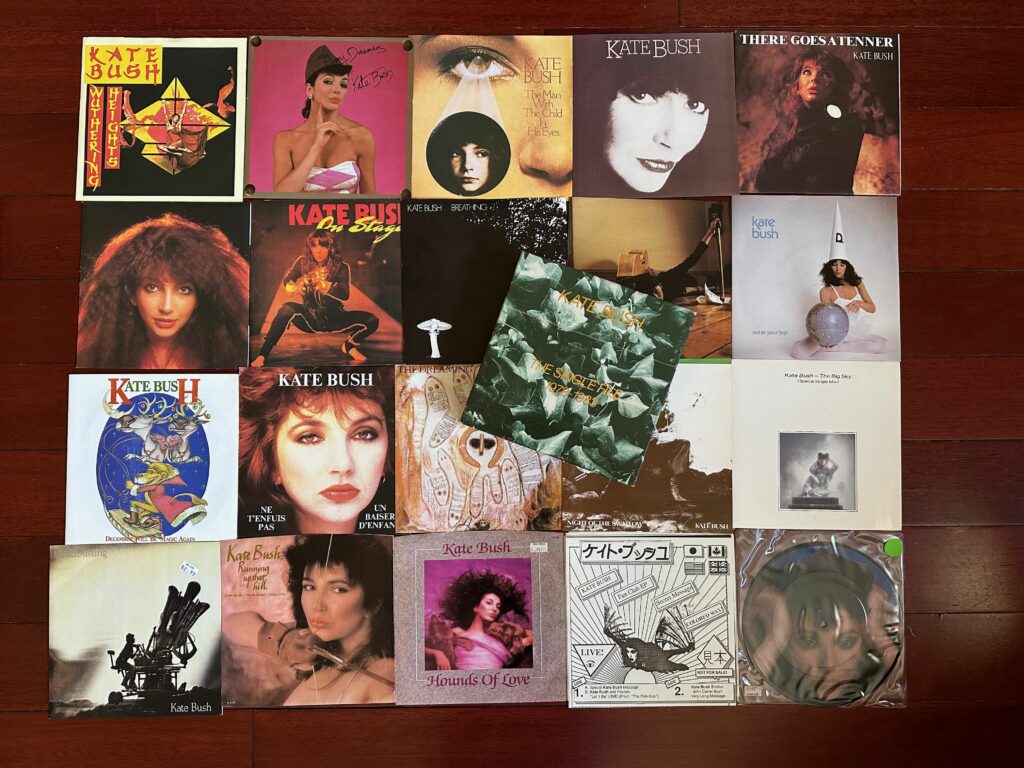
Notable 12-inch Single A Sides and B Sides
At first, it seemed absurd to have a single take up as much vinyl space as an album, but when the glories of the format started yielding delicious fruit, all was forgiven. When I was in high school, I spent most of my money on 12-inch singles from the likes of Prince, Kate Bush, Duran Duran, New Order and Big Country. Not only did the A-sides offer extended dance versions of the songs, many of these remixes contained extra verses. When the “Let’s Go Crazy” 12-inch veers off into the sonic version of the Upside Down heard in the movie, listeners are ushered into an aural VIP room that casual Prince fans couldn’t fathom. “Girl”, the flipside of “America” from Prince’s Around the World in a Day era, takes the b-side to new levels – when spun properly, it adds really spicy new lyrics and an orgasmic chorus, when spun backwards, it reveals hidden lyrics to a song called “Boy”. If you rebuilt Around the World in a Day with 12-inch mixes swapping out the album tracks released as singles, plus the 12-inch mixes for B-sides, “Girl”, “Hello”, and “She’s Always in My Hair”, you just might have Prince’s finest studio album. In turn, “17 Days” and “Erotic City” are as essential to the Purple Rain experience as the proper album tracks, with the extended “hallway speech” version of “Computer Blue” being one of the best moments of Prince’s career.
Investing in these extra tracks can add up, four 12-inch singles per 1984-era album at a safe average $4.99 each ($20) would equate to roughly $63 today (adjusted for inflation) – in addition to the price of the album. New Order, the band behind the best-selling 12-inch single of all time (“Blue Monday”), blissfully made it easier for fans to keep up on their 12-inch mixes with their Substance compilations.
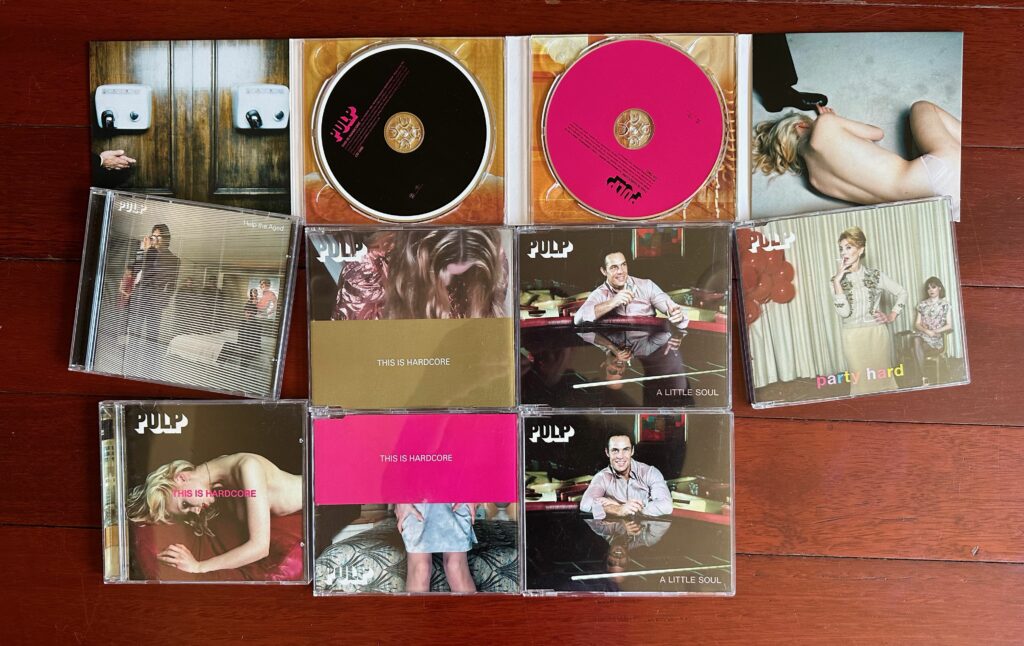
Pictured above — these aren’t all of the singles from Pulp’s This is Hardcore era, but I needed to buy this many to get all the tracks (some of which did not make the super deluxe edition).
1990’s European CD Singles
When vinyl died for the first time in the early 1990s, the CD single rose from the ashes, and in turn, “bonus tracks” replaced the b-side as the incentive to buy. It wasn’t uncommon for bands to pad their CD singles with multiple remixes, bonus tracks, BBC sessions, acoustic takes or live cuts to keep their titles on the charts. Europe took the practice to absurd levels by often releasing 2 or more collectible variants per single, which means the average fan would own the album PLUS two versions of each single released, which could mean up to 7 or 9 pieces of physical media per album cycle. For me, I spent a good chunk of my 1990’s paychecks on CD singles by Prince, Foo Fighters, Nirvana, Pulp, the Beautiful South, and later on, Amy Winehouse, The White Stripes and The Coral.
All of these acts often saved some of their best work for the bonus track arena. For the Foo Fighters, bonus tracks proved fertile ground for inventive covers (Prince, B-52s, Pink Floyd, etc.), and additional opportunities for the late Taylor Hawkins to sing lead. Right now, compiling every Foo Fighters b-side would likely result in a 3CD set, but if you culled the best of the best into a tight 50 minute tracklist, it would rival the best albums in their discography.
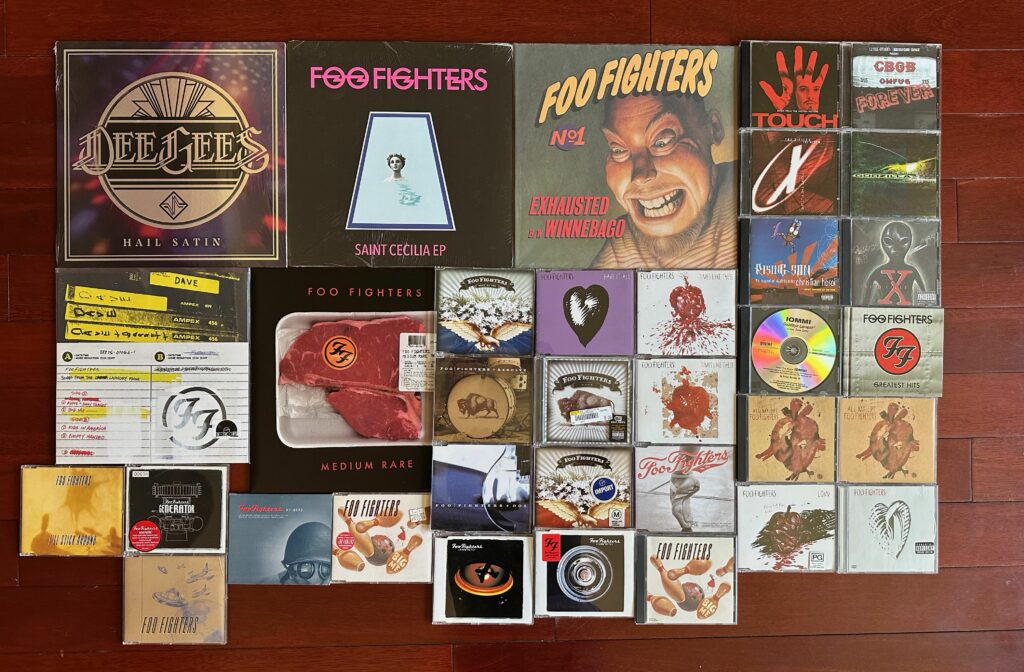
In the name of science, I decided to compare how much I spent on some particular Foo Fighters album cycles back in the day, to what I’m spending on bonus tracks in the modern era.
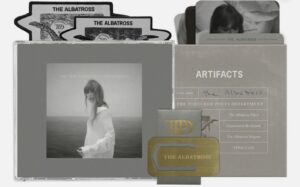 This month, Taylor Swift releases her new album, a 16-track opus called The Tortured Poets Society. She’s also releasing four deluxe variants, each boasting one extra track, “The Albatross:, “Bolter”, “Manuscript”, and “Black Dog”. I pre-ordered one of these on CD before knowing it was the first of four special editions. I spent $17.99 + 6.38 s/h + $2.51 tax for $26.86 (and a modest cost per track of $1.58). Had I stuck with the OG 16 tracks and ordered through Prime, I would have spent $15.37 total (96 cents/track), and it turns out the Amazon standard edition comes with “The Manuscript”. Now if I wanted all four songs, by buying three other standard CDs for $12.99/ea + shipping, I’d be all in for about $91.00 (or $4.55/each for 20 total tracks).
This month, Taylor Swift releases her new album, a 16-track opus called The Tortured Poets Society. She’s also releasing four deluxe variants, each boasting one extra track, “The Albatross:, “Bolter”, “Manuscript”, and “Black Dog”. I pre-ordered one of these on CD before knowing it was the first of four special editions. I spent $17.99 + 6.38 s/h + $2.51 tax for $26.86 (and a modest cost per track of $1.58). Had I stuck with the OG 16 tracks and ordered through Prime, I would have spent $15.37 total (96 cents/track), and it turns out the Amazon standard edition comes with “The Manuscript”. Now if I wanted all four songs, by buying three other standard CDs for $12.99/ea + shipping, I’d be all in for about $91.00 (or $4.55/each for 20 total tracks).
Now let’s compare what I spent on Foo Fighters CD singles back in the day. When their self-titled debut dropped in 1995, three singles were released. The first two singles boasted two bonus tracks each. Two variants of the third single, Big Me, compiled all four tracks and added two live and 3 BBC sessions to sweeten the deal. Filtering out the live tracks, had I just bought the album and first two singles, I’d be all in for about $25.97 ($53.62 today). 16 total tracks at $3.35/each in today’s money. I ran the same math for Foo Fighters’ 20-track In Your Honor album cycle from 2005, and once all 7 bonus tracks across four singles were factored in, it came out to a modest $2.89 per track in today’s money. While these are on par with Swift on CD, Taylor’s per track vinyl average comes out to a whopping $9.23 per track on a total required investment of $184.75 to buy all four sold-out vinyl variants from her store.
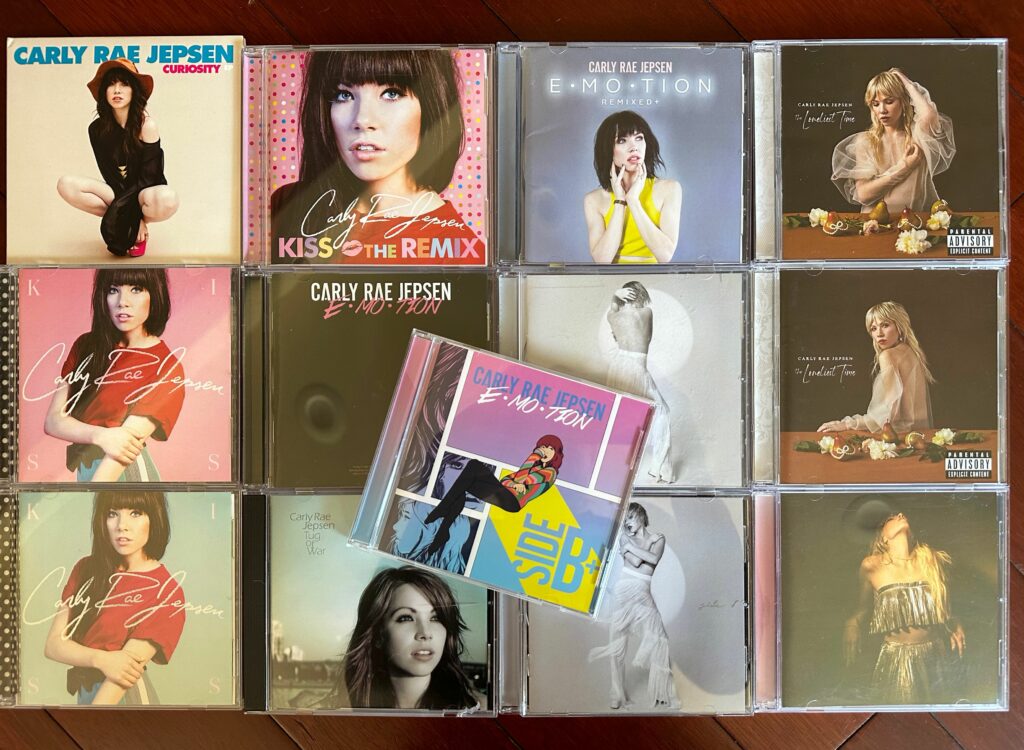
I could go on and on about this, and perhaps someday I will. We could discuss Japanese pressings of most major albums that are mandated to have exclusive tracks. I buy loads of these from the likes of Carly Rae Jepsen, Duran Duran, Sofia Carson and Cheap Trick. I particularly adore Carly Rae Jepsen because for each album cycle, she releases a full-length compilation of her b-sides for the same price as a single disc. And for the adventurous, even more treasure awaits on her Japanese remix compilations.

Cheap Trick thankfully released much of their Japanese exclusives, along with soundtrack oddities, on a 3-disc compilation series. This of course in addition to a giant catalog of album titles that takes up many shelves on my CD wall.
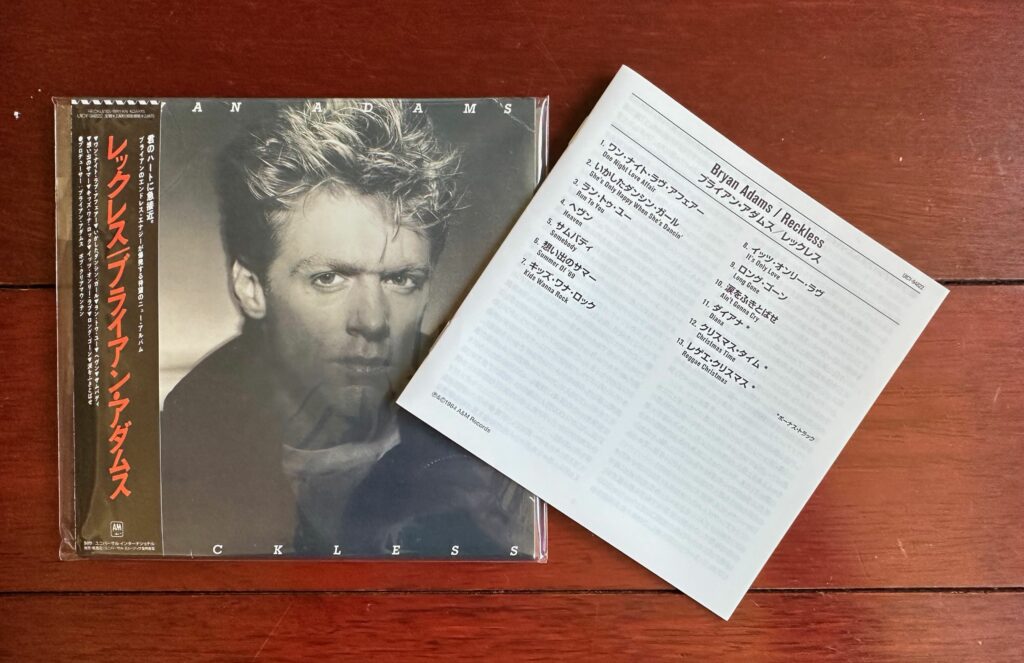
The Japanese pressing of Bryan Adams’ Reckless remains the only version of the late Ms. Windsor-crushing vinyl flipside “Diana” officially released on CD.
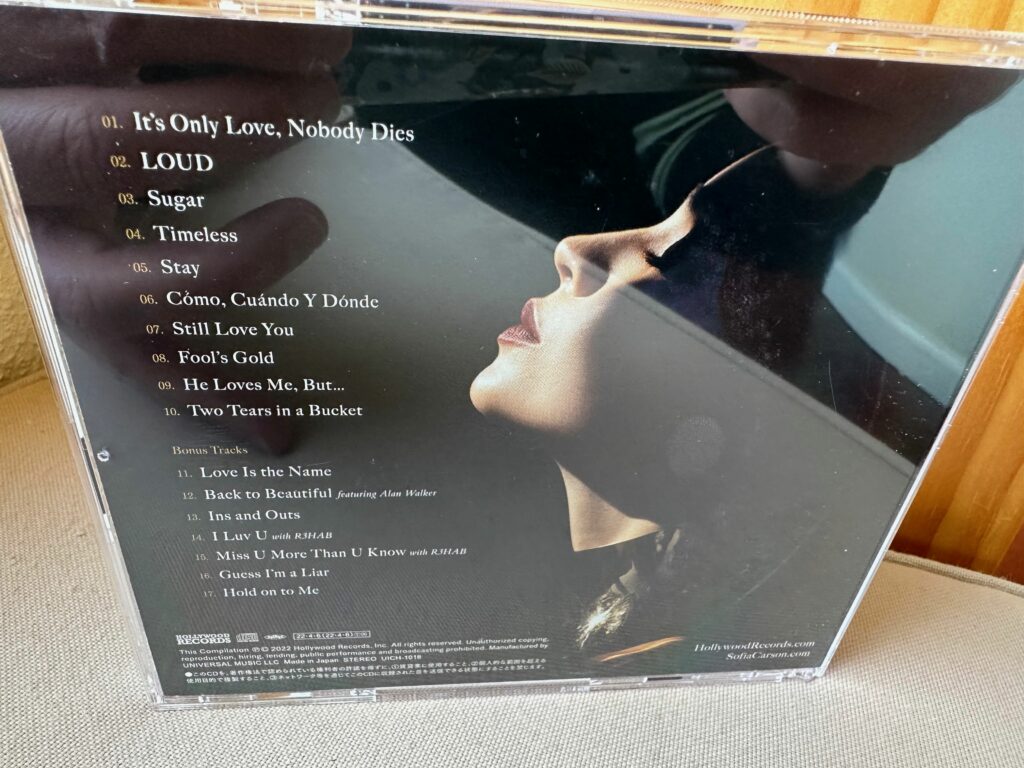
Despite having hundreds of millions of streams, the debut album by Disney Descendants star Sofia Carson was never pressed on CD here in the States, but the Japanese version (pictured above) is packed with bonus tracks and some of the best booklet packaging I’ve seen in any CD release this decade.
Big Boxes/Big Hassles
Major retailers have followed the lead of the Japanese market by demanding exclusive content in exchange for providing artists with high visibility end cap displays in their stores. It was a good idea in theory, but in most Target and WalMart stores today, you’d be hard pressed to find their music section let alone your closest store having any exclusive titles in stock when you visit. That said, plenty of A-list artists give these retailers exclusive tracks that still to this day have only been available on retailer-specific editions. I remember spending a fortune, let alone days on end driving from location to location, to hunt down the 17-track Best Buy exclusive edition of Duran Duran’s originally 9-track All You Need is Now album; this title had three tracks not found on the domestic 14-track deluxe edition. And still, there remained one additional track released only in Japan (“This Lost Weekend”), plus two remixes (including one by David Lynch) released only on import singles.
Back in the day, Best Buy released an exclusive EP that rounded up all the Foo Fighters Best of You-era B-sides that they wound up dumping at closeout prices due to over-stocking. See if you can find it in the photo I placed earlier in this article. When Target released Paul McCartney’s Egypt Station, the two bonus tracks were among the best on the album.
“You say you couldn’t live your life without me, I don’t know. But if you want it girl, you got it, It’s all right here in my box set.”
– BARENAKED LADIES, Box Set
Record Store Day exclusives, soundtracks, hits compilations, and super deluxe box sets remain thriving markets to satiate the endless needs of the super fans, all while the casual fans will happily just stream the hits and move on with their lives. Sure I’ve made some regrettable purchases – such as buying Tears for Fears Songs from the Big Chair Super Deluxe Edition on eBay for $185 when it was out of print, only to see it repressed for a plum $85 a year later. I bought two versions of Dua Lipa’s first album, and three versions of Future Nostalgia, and have no regrets, each subsequent version serves up a full album’s worth of new material. I’m glad I held off buying Olivia Rodrigo’s pricey RSD edition of her 4-track Guts EP, as she added a 5th track to the digital deluxe out a few weeks back.
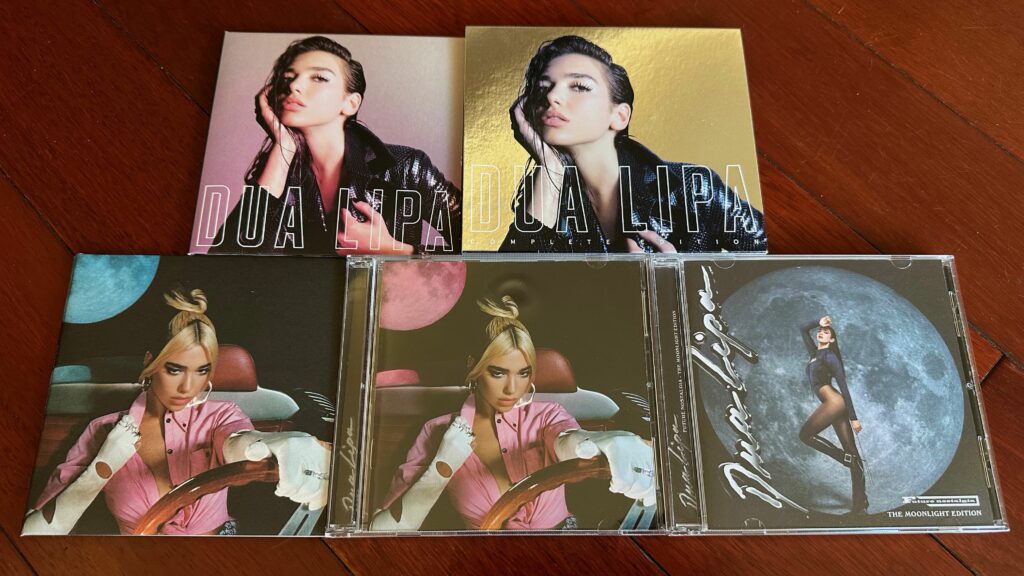
If you’re gonna be a super fan, be prepared to pony up. And just remember, the cost of owning everything they release this year will likely add up to less than the convenience fee tacked onto the average stadium concert ticket.
For a deeper dive into this other aspects of this issue, read “Music’s Physical Crisis is Taking Notes” in the Duque’s Delight newsletter from Popdose alum Mike Duquette.





Comments